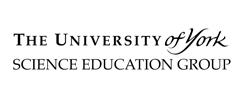- View more resources from this publisher
 University of York Science Education Group (UYSEG)
University of York Science Education Group (UYSEG)
Evolution
A Year 11 module from the Salters’ Key Stage Four double award science course. The module begins by considering variation within humans and in other species and how this could arise. The gene theory of inheritance is then studied, and finally the structure and function of DNA and applications in genetic engineering.
The difference between inherited and acquired characteristics is established. Different theories about the origins of species are tested against historical and fossil evidence. The fossil record for horses, and a predator/prey game simulating predation of moths show how variation and natural selection can favour one particular variation of a species.
Chromosomes are identified as the basis for transmission of characteristics from one generation to the next. Cell division by mitosis and meiosis is studied. The concept of genes is introduced through study of a sex-linked disorder. The concept of dominant and recessive alleles is used to predict patterns of inheritance. A test exercise shows the steps necessary to establish a ‘true-breeding’ population of a plant variety.
Students construct a model of part of a DNA molecule. They see how the base-pair sequence can code for protein synthesis, and consider some possible applications of genetic engineering.
Section 1: Breeding winners
The difference between inherited and acquired characteristics is established. Different theories about the origins of species are tested against historical and fossil evidence. The fossil record for horses, and a predator/prey game simulating predation of moths show how variation and natural selection can favour one particular variation of a species.
Section 2: The gene machine
Chromosomes are identified as the basis for transmission of characteristics from one generation to the next. Cell division by mitosis and meiosis is studied. The concept of genes is introduced through study of a sex-linked disorder. The concept of dominant and recessive alleles is used to predict patterns of inheritance. A test exercise shows the steps necessary to establish a ‘true-breeding’ population of a plant variety.
Section 3: Engineering a better future
Students construct a model of part of a DNA molecule. They see how the base-pair sequence can code for protein synthesis, and consider some possible applications of genetic engineering.
Show health and safety information
Please be aware that resources have been published on the website in the form that they were originally supplied. This means that procedures reflect general practice and standards applicable at the time resources were produced and cannot be assumed to be acceptable today. Website users are fully responsible for ensuring that any activity, including practical work, which they carry out is in accordance with current regulations related to health and safety and that an appropriate risk assessment has been carried out.
Downloads
-
Evolution 8.77 MB





